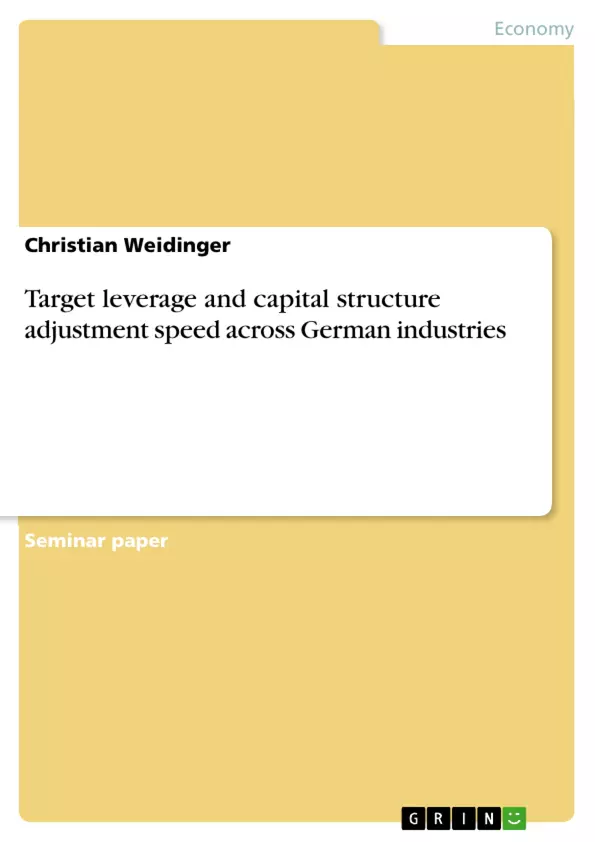Since Modigliani/Miller’s famous theorem (1958) that capital structure is irrelevant for firm valuation, firms’ capital structure choice has been one of the most significant subjects in the modern finance theory. The subsequent theoretical literature has found evidence to negate the irrelevance theorem. Most empirical studies applied a static framework and are capable to explain differences in the optimal leverage ratios across firms, using observed leverage ratios as proxies for the optimal target leverage, but do not explain observed differences in firms’ leverage ratios itself. One broadly accepted reason for a firm’s deviation from their target leverage ratio is the existence of adjustment costs. In the presence of adjustment costs, firms may deviate from their target leverage and find it not cost effective to adjust their leverage ratio frequently or fully within one period, even if they recognize that their existing capital structure is not optimal. This shows the need for developing and using a dynamic approach in order to examine firms’ capital structure.
The paper is organized as follows. Section 2 provides a brief overview of the three main theories of capital structure. Section 3 specifies the dynamic partial-adjustment model and describes the variables that may affect the target capital structure as well as the adjustment speed. Section 4 reports the empirical results and Section 5 concludes the paper
Inhaltsverzeichnis (Table of Contents)
- 1. Introduction
- 2. Theories on capital structure
- 2.1. Trade-off theory
- 2.2. Other theories on capital structure
- 3. The dynamic framework
- 3.1. The two-stage dynamic partial-adjustment capital structure model
- 3.2. Definitions of leverage
- 3.3. Determinants of the target leverage
- 3.4. Determinants of the speed of adjustment
- 4. Empirical analysis
- 4.1. Data description
- 4.2. Descriptive statistics of observed leverage ratios
- 4.3. Determinants of the target leverage
- 4.4. Determinants of the speed of adjustment
Zielsetzung und Themenschwerpunkte (Objectives and Key Themes)
This work aims to investigate target leverage and the speed of capital structure adjustment across various German industries. It employs a dynamic framework to analyze these factors.
- Target leverage determination in German firms
- Speed of capital structure adjustment across industries
- The influence of various factors on target leverage
- Factors impacting the speed of adjustment towards target leverage
- Application of a dynamic partial-adjustment model to capital structure
Zusammenfassung der Kapitel (Chapter Summaries)
Chapter 1: Introduction provides an overview of the research topic and its significance.
Chapter 2: Theories on capital structure reviews existing theoretical frameworks related to capital structure, including the trade-off theory and other relevant models.
Chapter 3: The dynamic framework details the methodological approach, including a two-stage dynamic partial-adjustment model, definitions of leverage, and the identification of determinants for both target leverage and adjustment speed.
Chapter 4: Empirical analysis presents the data, descriptive statistics, and empirical findings regarding the determinants of target leverage and adjustment speed.
Schlüsselwörter (Keywords)
Target leverage, capital structure, adjustment speed, German industries, dynamic partial-adjustment model, empirical analysis, trade-off theory.
- Quote paper
- Christian Weidinger (Author), 2010, Target leverage and capital structure adjustment speed across German industries, Munich, GRIN Verlag, https://www.grin.com/document/183708



